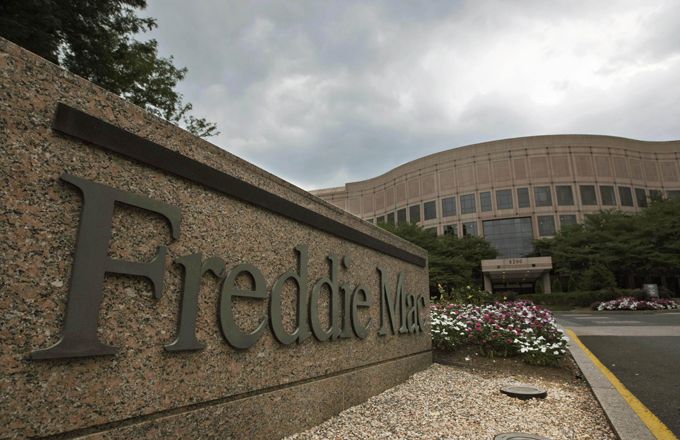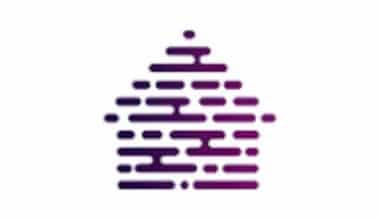Most American adults have certainly heard the terms Freddie Mac and Fannie Mae at some point, but they may not know who or what they are. The names have a down-home character to them, evoking a certain vernacular charm that belies the purposeful function of these housing market titans. While both entities are significant in today’s home market, in this article we’ll look into the meaning of FHLMC, its history, rental income, selling guide, and core function, as well as whether it is backed by the US government. Examine the difference between Gnma Fnmaf and FHLMC, as well as FHLMC vs Fnma.
What Is FHLMC?
The Federal Home Loan Mortgage Corporation (FHLMC) is a stockholder-owned, government-sponsored enterprise (GSE) established by Congress in 1970 to keep money flowing to mortgage lenders, thereby promoting homeownership and rental housing for middle-income Americans. The FHLMC, also known as Freddie Mac, is a major player in the secondary mortgage market, purchasing, guaranteeing, and securitizing house loans.
History of FHLMC
The federal government established the Federal Housing Loan Mortgage Corporation (FHLMC), or Freddie Mac, in 1970 to provide an uninterrupted flow of funding to mortgage lenders in order to stabilize the housing market and expand affordable American homeownership. Before Freddie Mac (and Fannie Mae), the retail housing sector required more regulation and even more targeted stimuli to preserve liquidity and stability.
There was Fannie Mae in the beginning.
Fannie Mae (Federal National Mortgage Association) was established by the government in 1938 as part of the New Deal to assist create a more consistent flow of mortgage-related funding to support an increase in affordable housing. Congress did not create Freddie Mac, which had a similar objective, until some 30 years later.
Fannie Mae’s inception created the framework for the big post-World War II housing boom by providing middle-class households with secure, cheap financing. This was made feasible not only by the influx of government-backed loans but also by the establishment of a “secondary market” for these loans, in which they could be packaged and sold as securities. These are referred to as mortgage-backed securities (MBS).
The secondary market, or bond market, made the entire business model profitable and provided a feasible avenue for banks and other lenders to offer fixed-rate 20- and 30-year loans with confidence. The benefit to customers was obvious: retail mortgages could now be paid back slowly and consistently, giving local economic stability. On the lending side, the ability to bundle and sell home loans as collateral provided a means of replenishing liquidity and encouraging lenders to aggressively fund new loans.
What Does the FHLMC Do?
The mission of Freddie Mac is to offer liquidity, stability, and affordability to the US housing market. It pursues these goals with several tools at its disposal.
#1. Liquidity:
Freddie Mac acquires mortgages from smaller banks, credit unions, and other lenders. As a result, Freddie Mac keeps its lender network liquid, allowing it to continue issuing loans. This is the key to keeping the mortgage market running.
#2. Stability:
Freddie Mac consolidates the mortgages it purchases into securities, which it then sells to investors in the secondary mortgage market. This helps to stabilize the broader mortgage market.
#3. Affordability:
While Freddie Mac does not influence property prices, it does provide preferential financing schemes such as Home PossibleSM and Home Possible AdvantageSM.
The Fannie Mae Selling Guide
Fannie Mae and FHLMC both recently updated their respective selling guides.
Fannie Mae released the Selling Guide Announcement (SEL-2022-01), which includes revisions to the following:
- Desktop appraisals: Allowing the use of desktop appraisals for certain one-unit principal dwelling acquisition transactions with LTV ratios less than or equal to 90% (effective March 19, 2022);
- Homestyle Renovation loans: The following requirements have been updated for HomeStyle Renovation loans: (1) renovation work must be completed within 15 months of the loan closing date; (2) extensions beyond the 15-month timeframe will only be permitted due to extenuating circumstances beyond the borrower’s control; and (3) additional information required in the renovation loan agreement (effective February 2, 2022).
- Loan-level price adjustment credit for HomePath properties: Allowing the lender to credit the borrower for the cost of the appraisal when a loan secured by a HomePath property is sold to Fannie Mae (starting February 2, 2022); and
- Asset Documentation: Updated documentation requirements for asset verification for sure refinance transactions underwritten in desktop underwriting (i.e., assets will not be required to be documented where the sums required to be verified are $500 or less) (effective March 19, 2022).
FHLMC Selling Guide
The FHLMC published Selling Guide Bulletin 2022-2, which addressed, among other things, the following:
- Property eligibility and appraisals: Based on the success of the temporary COVID-19 appraisal flexibilities and a market appetite for appraisal options that do not require physical inspection, Freddie Mac is introducing a desktop appraisal option instead of an interior and exterior inspection appraisal for certain transactions mortgages (effective March 6, 2022).
- Quality control: Increased flexibility for re-verification of data obtained from Freddie Mac-designated third-party service providers, as well as the ability to re-verify employment and income through email (effective February 2, 2022);
- Income and assets: Updated age of tax return requirements reflecting 2021 tax year dates, and additional specificity to Home Equity Lines of Credit (HELOCs) as an eligible source of funds towards the down payment, closing costs, and reserves, provided that the mortgage file includes evidence that the HELOC is secured by the borrower’s real property and that the HELOC proceeds have been disbursed to the borrower (effective February 2, 2022); and
- User forms and certificates: Retires the Affordable Merit Rate Mortgage note and rider (effective February 2, 2022).
FHLMC Rental Income
In Bulletin 2018-19, published on October 31, 2018, the FHLMC announced changes to rental income requirements. The major changes are listed here.
FHLMC Rental Income is Necessary to Qualify
When using rental income to qualify, Freddie Mac (FHLMC) has adopted the following requirements:
- Borrowers must own a primary residence to qualify for the rental income generated by the subject property when purchasing a rental property or converting a primary residence to a rental property. If the borrower does not own a primary residence, rental income cannot be used to qualify.
- Borrowers who purchase a rental property or convert their principal residence to a rental property face the following restrictions if they lack at least one year of investment property management experience:
- Rental income may only be used to offset the rental property’s PITI payment.
- Any rental income over the PITI payment is not allowed to be added to the borrower’s gross monthly qualifying income.
- The FHLMC also removed the condition that the net rental income used for qualifying be limited to 30% of the borrower’s monthly qualifying income if the borrower did not have a minimum of a one-year history of rental property management.
Rental Income Documentation
Tax returns for the two previous years are no longer required; only the borrower’s most recent tax return is required. Unless paperwork shows that the property was renovated or purchased late in the previous calendar year, rental income must be annualized.
The following are the current FHLMC rental income requirements:
- Loans submitted on or after April 12, 2019, must adhere to the new Freddie Mac guidelines.
- Before April 12, 2019, loans submitted had two options:
- The existing rental income requirements of Freddie Mac may be met as long as the loan funds are received no later than May 24, 2019.
- The FHLMC’s new rental income requirements may be met.
FHLMC vs Fnma
Fannie Mae (Federal National Mortgage Association or FNMA) was established in 1938 as part of a National Housing Act amendment. It was considered a federal government agency, and its mission was to serve as a secondary mortgage market for loans insured by the Federal Housing Administration. Under the Charter Act of 1954, Fannie Mae ceased to be a federal government agency and became a private-public corporation.
Fannie Mae and Freddie Mac are remarkably similar. Both are publicly traded companies that were established to fulfill a public purpose. The key difference between the two is the origin of the mortgages they purchase. Fannie Mae acquires mortgage loans from major retail or commercial banks, but Freddie Mac acquires loans from smaller banks, commonly referred to as “thrift banks” or “savings and loan associations,” that is dedicated to providing banking services to communities.
What Is the Difference Between GNMA, FNMAF, and FHLMC?
Let us now discuss Fannie Mae, Freddie Mac, and Ginnie Mae. What exactly are they, and how do they differ?
The similarities start with the fact that all three are dealing with the secondary mortgage market. What does this imply? Let’s imagine you go to Tiny National Bank and get a $1 million loan. Because this is a local bank, that was all the money available for lending. Tiny National Bank sells the IOU you supplied to an investor on the secondary market. Now that an investor has the I.O.U., the bank has another million dollars in cash to lend out. This ensures that the bank has a steady supply of funds to lend out. That’s an oversimplification, but you get the idea.
Ginnie Mae is similar to Fannie Mae and Freddie Mac, with the difference being that Ginnie Mae is an owned government business, but Fannie Mae and Freddie Mac are “government-sponsored enterprises” (GSEs), which are federally chartered corporations privately owned by stockholders.
Today, Ginnie Mae securities are the only mortgage-backed securities that are backed by the United States Federal Government’s “full faith and credit” guarantee, though some argue that Fannie Mae and Freddie Mac securities are de facto or “effective” beneficiaries of this guarantee after the Federal Government rescued them from insolvency and placed them under government conservatorship during the Great Recession in September 2008.
Why are the names so weird?
The names are derived from initials because initials are something our government adores. (Even our country is called the United States of America!) Fannie Mae was formed by the Federal National Mortgage Association or FNMA. FHLMC, or the Federal Home Loan Mortgage Corporation, was renamed Freddie Mac. The Government National Mortgage Association changed its name to Ginnie Mae.
Is FHLMC Backed by the US Government?
No, according to the FHLMC, “security, including any interest, is not guaranteed by, and is not a debt or obligation of, the United States or any agency or instrumentality of the United States other than Freddie Mac.” The US government does not finance or safeguard the FHLMC or FHLMC securities.
Fannie, Freddie, and the 2008 Mortgage Crisis
Freddie Mac and Fannie Mae were publicly traded corporations in the years leading up to the 2007 and 2008 housing crises. As a result, its CEO and senior team were tasked with increasing profitability.
Freddie Mac and Fannie Mae took on more risky assets, such as subprime mortgages, because the mortgages they held were backed by the US government and couldn’t default. In September 2008, the Federal Housing Finance Agency placed Freddie Mac and Fannie Mae in conservatorship rather than allowing them to fail.
What does FHLMC stand for?
The FHLMC is the Federal Home Loan Mortgage Corporation.
The Federal Home Loan Mortgage Corporation is a private corporation established by Congress whose aim is to enhance housing market stability and affordability by purchasing mortgages from banks and other loan makers.
Is FHLMC the same as Freddie Mac?
Yes, Freddie Mac is another name for the Federal Home Loan Mortgage Corporation, also known as FHLMC. Freddie Mac was established in 1970 as part of the Emergency Home Finance Act to enhance the United States secondary mortgage market.
What is the role of the FHLMC?
Freddie Mac’s role is to acquire a large number of loans from mortgage lenders, consolidate them, and sell them as mortgage-backed securities.
Who is eligible for Freddie Mac?
The applicant must be a permanent organization and an ongoing business that is duly allowed to do business in each country where it operates in origination or servicing. The applicant must be a viable company capable of originating and/or servicing investment-grade loans.
Why do banks sell mortgages to Freddie Mac?
Lenders can continue to make home loans because they sell mortgages to corporations like Freddie Mac. Freddie Mac helps the secondary mortgage market by keeping money moving through the mortgage system regardless of economic conditions.
What are the benefits of a Freddie Mac loan?
The following are the benefits of the Freddie Mac SBL Program:
- Loan sizes are flexible, ranging from $750,000 to $7.5 million.
- Low-interest rates beginning at 4.51%
- Extensive leverage, up to 80% LTV.
- Generous DSCR minimums are as low as 1.20x.
Conclusion
Homeownership is an important part of the American dream and the most effective strategy to build generational wealth. Banks and mortgage companies, on the other hand, do not have the financial resources to fund every loan. That is why GSEs are so vital in the mortgage sector.
Freddie Mac can provide affordability to homeowners, liquidity to lenders, and general stability to the housing market by utilizing its unique and time-honored connection with the United States Treasury. As long as restrictions are followed and high-risk trades are avoided, the Federal Housing Loan Mortgage Corporation’s contributions will continue to benefit the broader economy—and people’s lives.
Related Articles
- JUMBO MORTGAGE LIMIT: Jumbo Mortgage Limit 2023
- FNMA RENTAL INCOME: Meaning and Guidelines
- QUEEN LOGO: The Real Meaning, History, and Why There Is a Bird in Queen Logo
- MANDATORY ACCESS CONTROL MAC: How It Works






